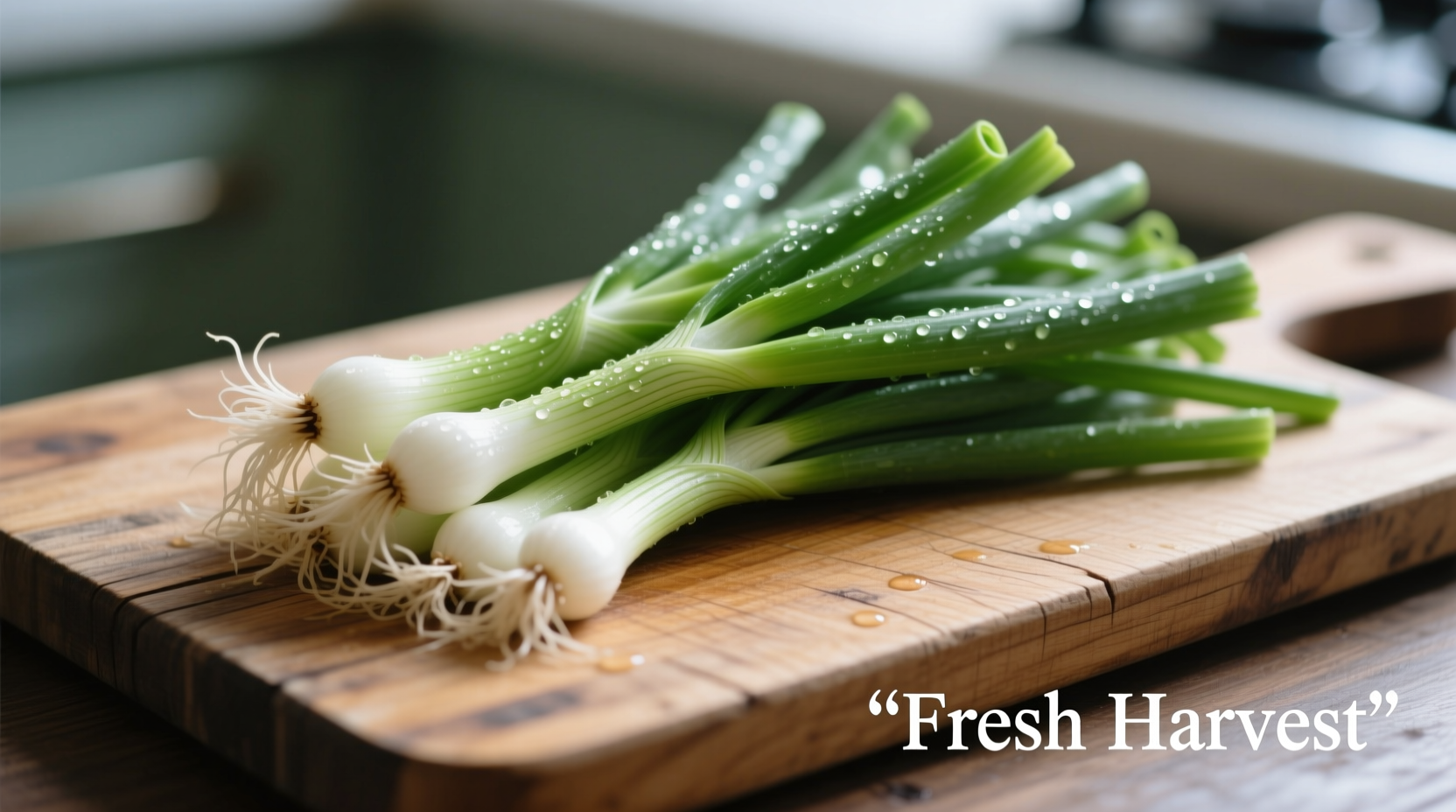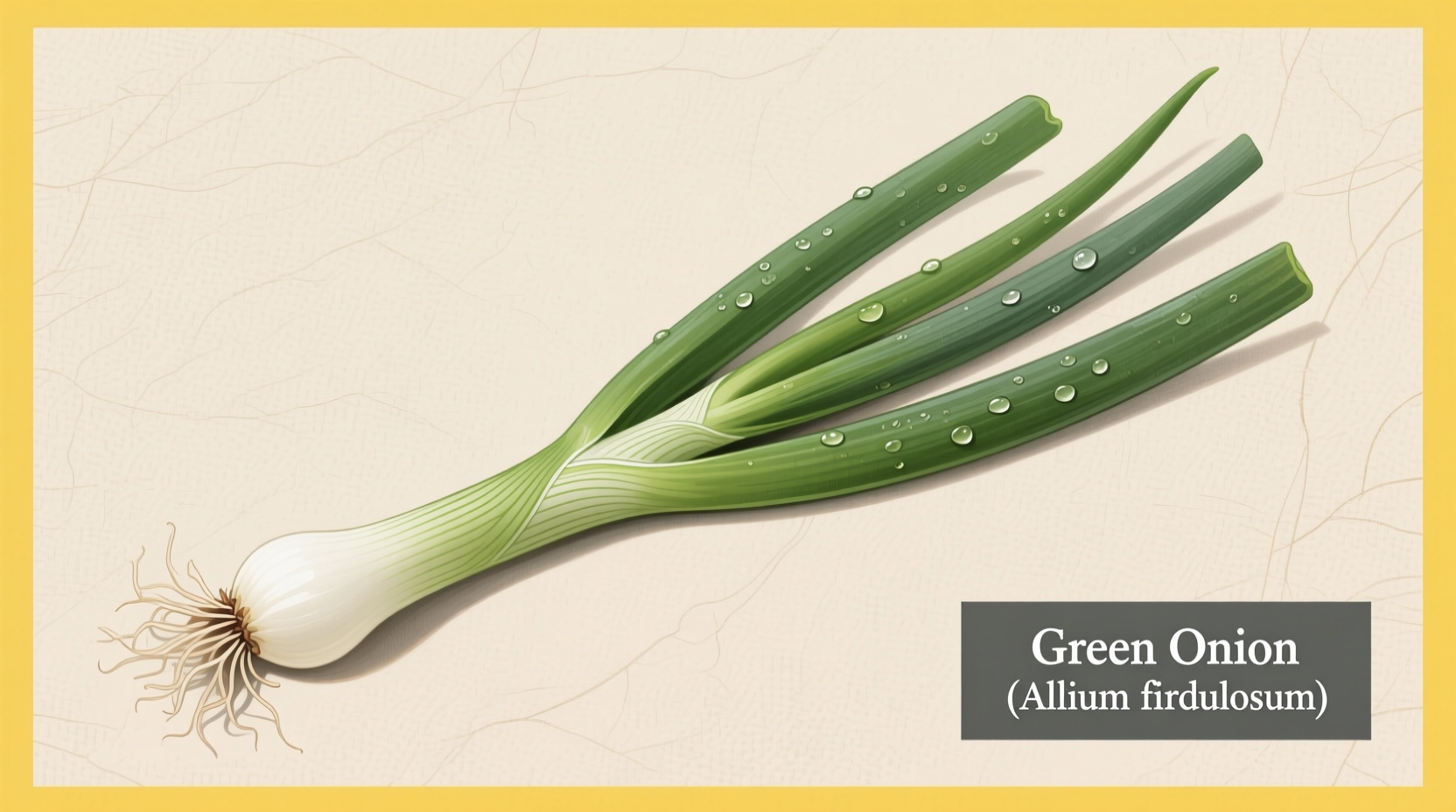What Exactly Are Green Onions? Your Complete Identification Guide
Green onions represent one of the most versatile and widely used fresh vegetables in kitchens worldwide. Unlike mature onions that form large bulbs, green onions are harvested early when the white base remains slender and the green tops stay tender. This harvesting method preserves their delicate flavor profile—significantly milder than regular onions but more pronounced than chives.
Botanically classified as Allium fistulosum, green onions grow as perennial plants in most climates. Their distinctive appearance features a small white bulb transitioning smoothly into vibrant green hollow leaves. When shopping, look for firm, crisp stalks with bright green tops and white bases free from browning or wilting. The entire plant is edible, though the white portion delivers a stronger onion flavor while the green section offers a grassier note.
| Vegetable Type | Botanical Name | Flavor Profile | Edible Parts |
|---|---|---|---|
| Green Onions | Allium fistulosum | Mild onion flavor throughout | White and green parts |
| Scallions | Allium cepa var. aggregatum | Slightly stronger at white base | White and green parts |
| Chives | Allium schoenoprasum | Delicate, grassy, subtle onion | Green stalks only |
| Shallots | Allium cepa var. aggregatum | Sweet, mild, complex | Bulb only |
Green Onions Through History: A Culinary Timeline
Green onions have nourished civilizations for millennia. Archaeological evidence from Chinese Neolithic sites dating to 5000 BCE reveals early cultivation of Allium fistulosum. Ancient Egyptians included them in workers' diets during pyramid construction, while Roman agricultural texts from the 1st century CE documented their use in Mediterranean cooking.
The vegetable spread globally through trade routes—reaching Japan by the 8th century where they became essential in traditional cuisine, and arriving in North America with European colonists in the 17th century. Today, China remains the world's largest producer, accounting for approximately 70% of global green onion cultivation according to the Food and Agriculture Organization of the United Nations.

Selecting and Storing Green Onions Properly
Choosing quality green onions significantly impacts your dishes. At the market, select specimens with firm, crisp stalks and vibrant green tops. Avoid any with yellowing leaves, slimy spots, or wilted appearance. The white base should feel solid without soft spots.
For optimal storage, treat green onions like fresh herbs. Trim any rubber bands, wrap them loosely in a slightly damp paper towel, and place inside a perforated plastic bag in your refrigerator's crisper drawer. This method maintains freshness for 7-10 days. Never store green onions near ethylene-producing fruits like apples or bananas, as this accelerates spoilage.
Nutritional Benefits Backed by Science
Green onions deliver impressive nutritional value despite their delicate flavor. A single cup (105g) of chopped green onions provides:
- 120% of your daily vitamin K requirement (essential for blood clotting and bone health)
- 32% of daily vitamin C (supports immune function and skin health)
- Significant amounts of vitamin A, folate, and manganese
- Only 32 calories per serving
Research published in the Journal of Agricultural and Food Chemistry confirms that green onions contain organosulfur compounds with potential anti-inflammatory properties. Unlike mature onions, they retain higher concentrations of certain antioxidants when consumed raw, making them valuable additions to salads and garnishes.
Mastering Green Onion Culinary Applications
Understanding when and how to use green onions transforms ordinary dishes. Professional chefs employ specific techniques to maximize their flavor potential:
Raw applications: Slice thinly on a diagonal for salads, garnishes, and cold dishes. The angled cut exposes more surface area, releasing flavor compounds while maintaining visual appeal. Add during final plating to preserve crisp texture and vibrant color.
Cooked applications: Add white portions early in cooking for foundational flavor (like in stir-fries), introducing green sections during the last 1-2 minutes to maintain freshness. When making soups or stocks, include the root ends for additional depth—just remember to strain them out before serving.
For enhanced flavor, try the Japanese technique of nagiri—lightly scoring the white base before slicing. This increases surface area without fully separating the layers, creating beautiful presentation while maximizing flavor release.
Avoiding Common Green Onion Mistakes
Even experienced cooks sometimes mishandle green onions. Here are critical errors to avoid:
- Confusing with similar alliums: Green onions differ from ramps (which have a stronger flavor and flat leaves) and chives (which are entirely green and more delicate)
- Improper washing: Always rinse thoroughly between layers where soil can hide—especially near the white base
- Overcooking: Green portions lose color and texture after just 60-90 seconds of cooking
- Wasting parts: The root ends can flavor stocks, and slightly wilted greens work well in sauces or pestos
When substituting in recipes, remember that one medium green onion equals approximately 2 tablespoons of finely chopped onion. For dishes requiring stronger onion flavor, use the white portion; for delicate garnishes, rely primarily on the green sections.











 浙公网安备
33010002000092号
浙公网安备
33010002000092号 浙B2-20120091-4
浙B2-20120091-4